The new doc "Your Friend Andrew W.K." gives a brief but entertaining overview of the Community High grad's life
A new 48-minute documentary, Your Friend Andrew W.K., hit YouTube on June 13. It doesn't appear that Italian filmmaker Flavio De Feo interviewed W.K. for the film; instead, he uses clips from other interviews -- from MTV and Vice to Larry King and Glenn Beck -- to tell the story of the Community High grad who's known for three things: uplifting pop-metal music, motivational speaking, and partying hard (in a positive way).
The film is stylized -- with flashy edits and images overlaid as W.K. speaks -- and entertaining, but if you know a little bit about W.K.'s story, there won't be any revelations. And, yes, they do go into the whole "Steev Mike" thing that started in November 2004. It was claimed in various anonymous blogs and even in an alleged hack of W.K.'s site that he was, in fact, merely one of several actors playing the Andrew W.K. character, which was created by a group of creative individuals known as Steev Mike.
Third Place Living: Marcia Bricker Halperin's photo exhibit "NYC's Vanished Cafeterias: 1975-1985"
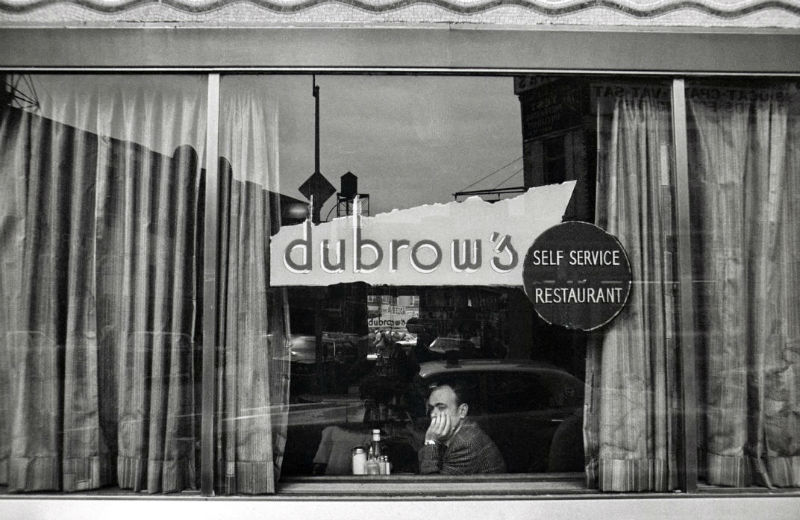
The first thing that jumps to mind when I think about New York City cafeterias is Edward Hopper's 1942 painting Nighthawks. In addition to its masterful capturing of manmade lights and nighttime shadows, many interpret the painting as a portrait of big-city loneliness. "The four anonymous and uncommunicative night owls seem as separate and remote from the viewer as they are from one another," states the proprietor of the fansite edwardhopper.net. But to me, it looks like the counter clerk is speaking with the couple, who may have had a great night out on the town based on the way they're smartly dressed, leaving the man with his back to viewers as the lone lonely one -- though the painter referred to him as "dark sinister" in his notes for the painting, not lonely.
These sorts of varied interpretations about what people are doing in eateries went through my mind as I viewed photographer Marcia Bricker Halperin's NYC's Vanished Cafeterias: 1975-1985 exhibition.
Halperin's work was on display at the University of Michigan's Lane Hall Gallery when COVID-19 closed down everything. Organized by The Institute for Research on Women and Gender, the Women’s Studies Department, the Jean and Samuel Frankel Center for Judaic Studies, and the Department of American Culture, it was originally scheduled to run January 16 to July 31, but the exhibit has moved online. The 17 black-and-white photos in the physical exhibit are interspersed with shots of the gallery setting and text panels for the online version,
While the name NYC's Vanished Cafeterias indicates Halperin went all over the city to photograph, the Brooklyn native shot at two locations, both part of the small, family-run Dubrow's chain. (She has also shot eateries in other places, such as Miami's Concord Cafeteria, not associated with Dubrow's.) As the Institute for Research on Women and Gender website states:
Valery Jung Estabrook's hand-sewn exhibit at U-M's LSA Humanities Gallery re-creates an uncomfortable snapshot of a rural American interior
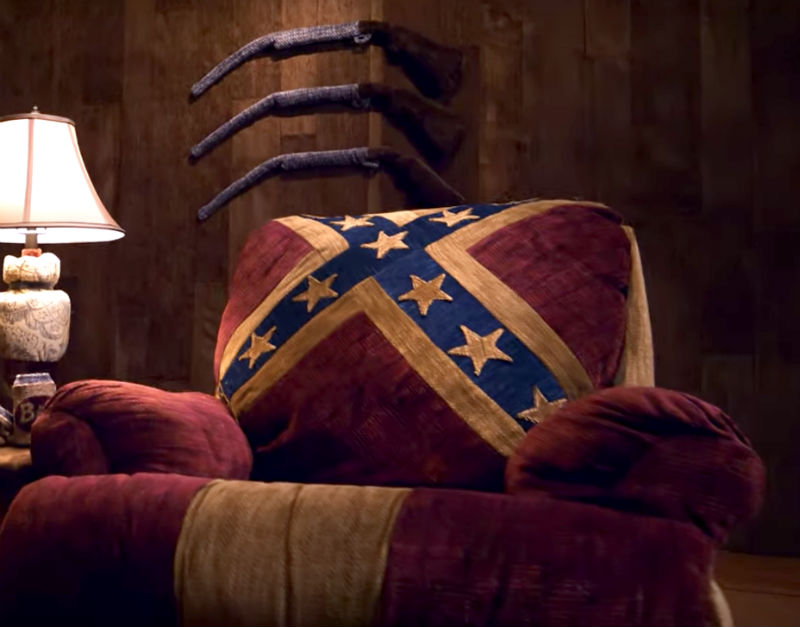
The LSA Humanities Gallery is known for exhibits that raise uncomfortable questions and featuring provocative artworks that cut to the heart of American culture. With its most recent exhibit, *Hometown Hero (Chink): An American Interior, viewers are invited to explore an installation designed by multidisciplinary artist and Paula and Edwin Sidman Fellow in the Arts recipient Valery Jung Estabrook.
Estabrook’s installation is comprised of a life-sized, hand-sewn re-creation of an American interior, which casually anchors iconography of America’s racist past and present against a backdrop of brown, dreary dimness. Jung bases the recreation on her experiences growing up in rural Southwestern Virginia, though the low-wattage lightbulbs and centrally-placed television are instantly recognizable to me as a person who grew up in the rural Midwest, suggesting that Estabrook’s experiences are not unique to the American South. *Hometown Hero (Chink): An American Interior casually and precisely captures rural American life, from the guns mounted on the wall to the La-Z-Boy-style chair upholstered with a Confederate flag. This familiarity is unsettling.
Neighborhood Theatre Group’s new play "Thoughts and Prayers" explores what happens when a high school is upended by violence
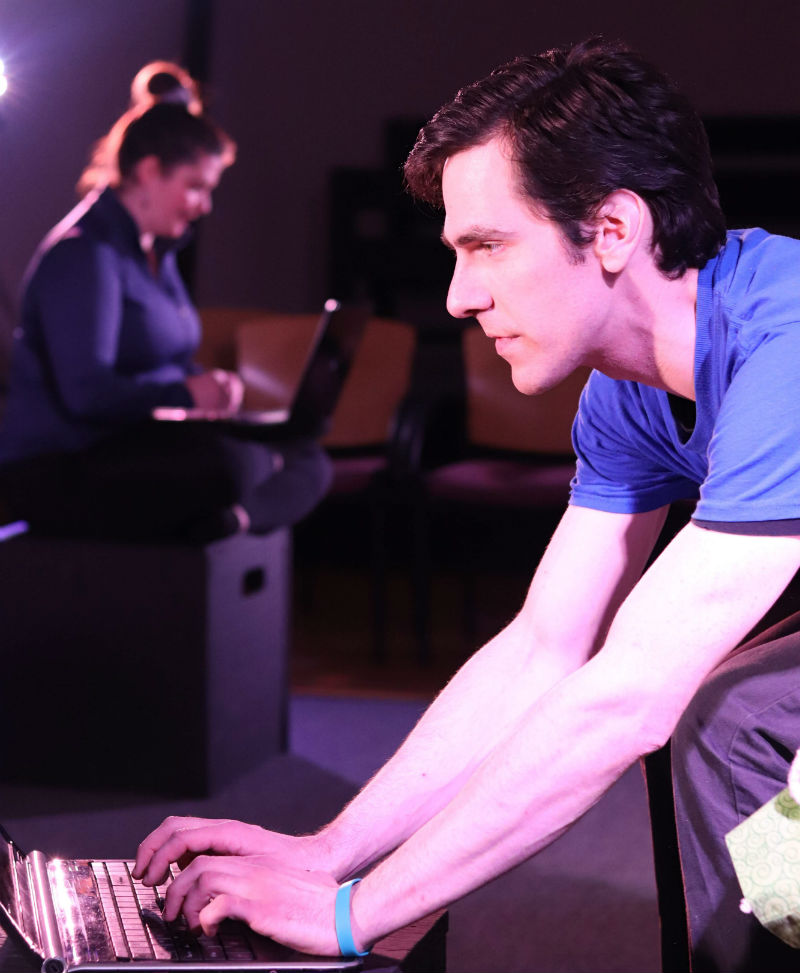
Neighborhood Theatre Group’s new play, Thoughts and Prayers -- written by A.M. Dean and directed by Marisa Dluge -- is a story based in fictional but present-day Michigan where a gun and manifesto were discovered in a high school student’s trumpet case. The FBI responds by sending in Agent Sarah Allistair to implement “Project Armored Apple” in which teachers are supplied guns and training to react in the event of an attack at the school.
The story centers on Agent Allistair and Andy Webber, the awkward and ominous 17-year-old friend of Tyler, the gun-and-manifesto student. Andy’s family comprises of his mother, Melanie -- the devoted but anxious parent who is also a teacher at his high school; his father, Doug -- the cringe-inducing dad who thinks Tyler’s motive is related to receiving “too many hugs”; and Uncle Jeff -- a janitor at the high school and the relatable adult the teenager desperately needs.
There's a violent interaction in the play, but writing about it directly would be a spoiler. Trust that it comes as a surprise.
Thoughts and Prayers is directed by Marisa Dluge and stars Mimi Blackford, Eric Hohnke, Mike Sandusky, Debbie Secord, Kate Umstatter, and Craig VanKempen.
The term “thoughts and prayers” has become a common colloquialism within the discussion of school shootings. Playwright A.M. Dean uses this story to explore our reactions to these tragedies, how these tragedies may affect the afterlife, and how we prevail through our thoughts and prayers.
As to be expected, this play did not provide answers as to why these senseless acts take place in our schools. It left me feeling more nauseous about the current state of violence in our schools, more so than anything else. Perhaps that is a good thing.
Dean is the literary manager and co-founder of Neighborhood Theatre Group. He lives in Ypsilanti and received his degree from Michigan State University where he studied theater.
He answered a few questions via email.
The Real Reality: PTD Productions explores Tom Stoppard’s multilayered “The Real Inspector Hound”
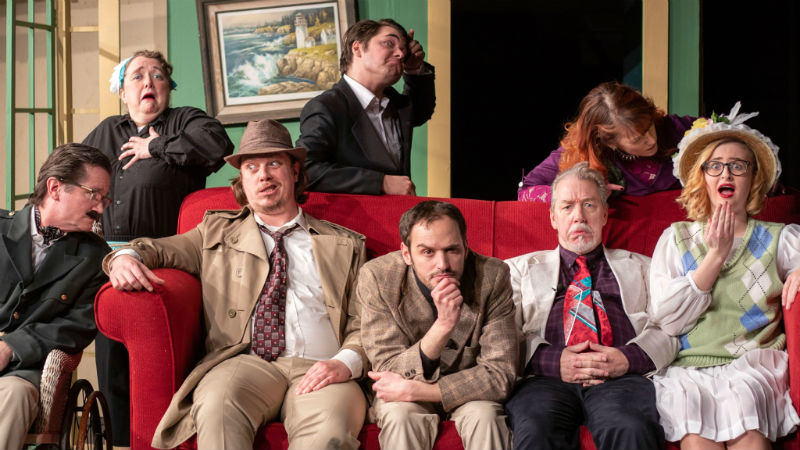
Tom Stoppard’s The Real Inspector Hound puts a theater reviewer in the interesting position of reviewing a play that satirizes theater reviewers reviewing a play. It is an absurdist work that is, on the surface, like a play-within-a-play, but it becomes something more. It’s a journey that explores identity, authenticity, and what is real versus what we tell ourselves might be real. PTD Productions performs this layered classic with aplomb.
The audience is first introduced to characters Moon (Russ Schwartz) and Birdboot (Larry Rusinsky), two theater critics attending a new murder-mystery play in London in the style of Agatha Christie’s The Mousetrap. (The title is also a reference to Christie’s famous play.) Moon is a second-string theater critic with an obsessive fixation on first-string theater critic Biggs. Throughout his monologues, Moon begins to define his existence with Biggs’s absence and ponders killing Biggs in order to take his place. We eventually learn, however, that there is a third-string critic Puckeridge behind Moon, and Moon wonders if Puckeridge yearns for Moon’s death as Moon dreams of Biggs’.
The Sound of Abstract Expressionism: “Ted Ramsay: Visual Symphony Series” at WSG Gallery
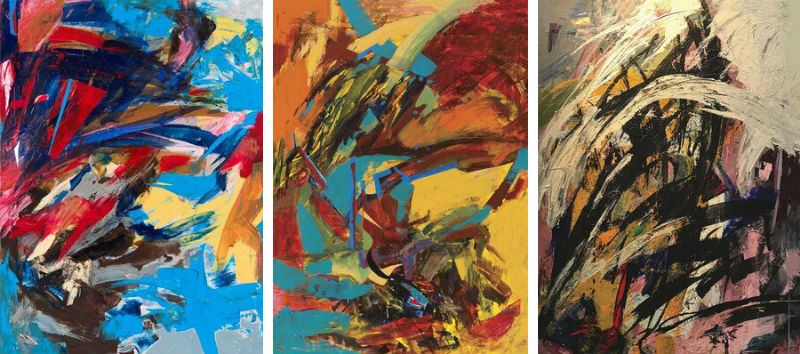
Ted Ramsay, a professor emeritus at the University of Michigan’s School of Art and Design, has long made expressionism in its many guises the focus of his painting. His last WSG exhibit, March 2013’s Spatial Narratives in Paint, was marked by expressive figuration, which Ramsay explained as, "In my figure paintings I strive for an aura of magic and mystery tempered with a subjective, but believable dose of reality." I wrote at that time that Ramsay’s “whose homage to silence is so complete, you can almost hear a pin drop.”
The paintings in Ted Ramsay: Visual Symphony Series, on display at WSG through March 14, are more boisterous than those in Spatial Narratives as Ramsay loosens his representational moorings by melodically flinging himself into his working surfaces. His Visual Symphony Series bears the conventions of abstract expressionism, but how they came into being are particular to Ramsay's working environment. As he tells us in his gallery statement:
Sensitive Sounds in a Snowy Town: West-Eastern Divan Ensemble at Rackham Auditorium

“You’re a mighty and hearty lot,” said UMS President Matthew VanBesien, peering out over the snow-dusted crowd that had slowly filtered into the seats of Rackham Auditorium Wednesday evening.
It was a lighthearted joke at the expense of those would-be concert-goers who might have filled in the empty chairs throughout the venue had they not been defeated by the weather, but it wasn’t unjustified: The snowstorm that had swept over Ann Arbor throughout the previous day and night had made navigating the roads a tricky proposition, and the spacious Rackham Auditorium looked to be more empty than not.
In introducing the concert, accordingly, VanBesien invited patrons to fill in the seats towards the front, jettisoning the assigned seating in favor of creating a more compact, less spotty-looking audience for the evening’s musical entertainment. Once condensed, it looked like the venue was maybe just under half-full, give or take a few dozen people.
Those who had braved the snowstorm had turned out to see the West-Eastern Divan Ensemble, a chamber group offering sensitive interpretations of music both old and new, but perhaps better known for the quietly political origins of their parent organization, the West-Eastern Divan Orchestra. Founded in 1999 by the famed pianist and conductor Daniel Barenboim and the Palestinian-American scholar Edward Said -- famous in numerous fields for his books Orientalism and Culture and Imperialism -- the orchestra was created as a place for musicians from throughout the Middle East (notably Isreal, Palestine, and their Arab-majority neighbors) to come together to make music on an equal basis.
A Thread of Jewels: The 6X collective's "Mistaken for Strangers" fills the A2 Art Center's Gallery 117 with wearable art
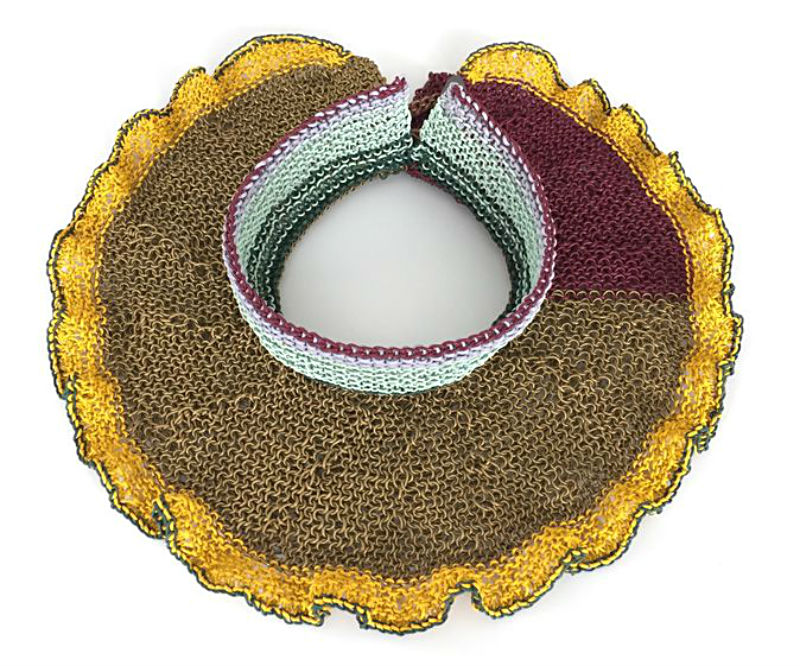
The contemporary jewelry-making collective 6X makes interconnected, wearable artworks. The six-member group of Midwesterners explained their approach as part of its February exhibition at the Ann Arbor Art Center: “Ties, which may not consciously be acknowledged at a simple glance, are visible upon further consideration of approaches to concept, material, and process.” Thus, the title of the A2AC exhibit, Mistaken for Strangers, in its Gallery 117 space references the connectedness of their creative processes, which may not be immediately recognized by viewers.
A2AC moved its Gallery 117 from the second to the first floor, allowing easier access for visitors who may have not been able to use the stairs previously. 6X has created a dynamic installation that emphasizes the collective’s desire to form relationships between their varied works. The group accomplishes its goal to visually connect seemingly disparate formal approaches, with two towers of open white boxes standing in the center floor space, each box containing a piece of jewelry, and additional pieces displayed on top of the boxes.
A quote by Nadeem Aslam prefaces the gallery wall text: “Pull a thread here and you’ll find it’s attached to the rest of the world.” The concept of the threads that connect us is enforced visually not only by exhibiting the artists’ disparate works together but also through a two-part installation of white thread. The loom-like threads are suspended between two walls in one corner of the gallery, and a two-panel installation hangs from the ceiling above a series of pedestals displaying the artworks.
The Guild of Artists & Artisans' new Gutman Gallery opens with an exhibit filled with love (and hearts)

On a standardly gray February evening I made my way through the dark and cold toward Kerrytown. The block of Fourth Street between Ann and Huron is not a particularly active space after five, but tonight was different. Brightly lit, and with condensation beginning to form, glances of color slipped out the storefront windows of the newly opened Gutman Gallery.
Operated by The Guild of Artists & Artisans, the Gallery is named for the Guild’s founder, Vic Gutman. A University of Michigan student in the 1970s, the campus asked Gutman to do something about the students who had started hawking their own art on the Diag parallel to the Ann Arbor Street Art Fair. His response was to create the Free Art Fair, which morphed into what is now known as the Ann Arbor Summer Art Fair, and led Gutman to found the Michigan Guild of Artists and Artisans in 1973.
Riverside Arts Center's exhibit "Embrace: The Black Experience" explores the spectrum
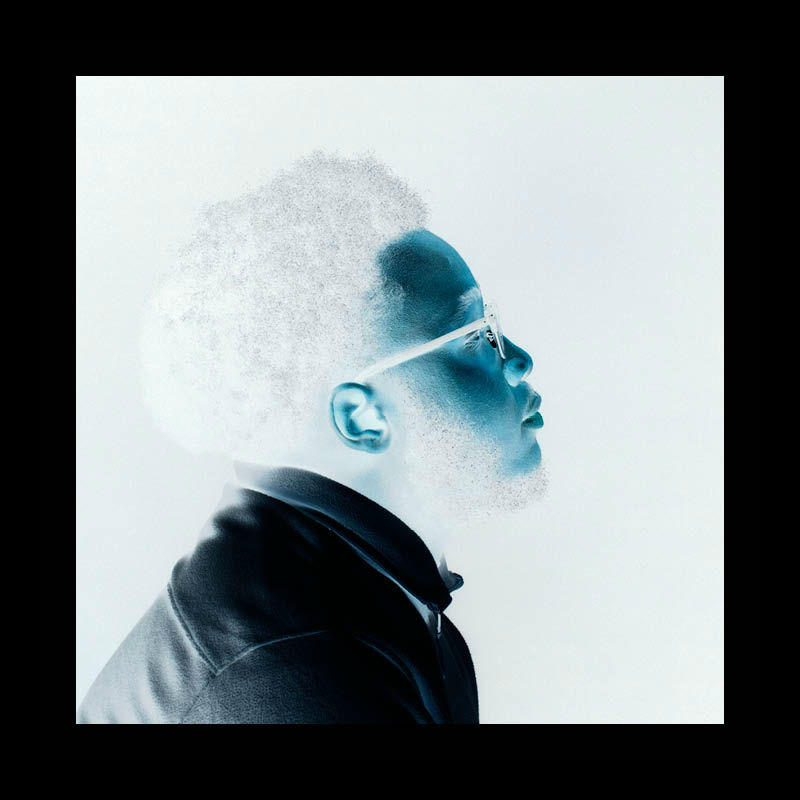
The artists in Riverside Arts Center's Embrace: The Black Experience grapple with what that multifaceted experience means. They respond with artwork just as varied, from metalworks to photographs and digitally rendered multimedia.
Avery Williamson’s three hanging wall scrolls are abstracted line paintings that employ shades and shapes of brown as the main component of their compositions. Williamson is a multidisciplinary artist who works with weaving, photography, painting, and drawing. She describes her work as an exploration of “the narratives of black women in personal and institutional archives,” where they are “defined by names, occupations or skin color.”


































